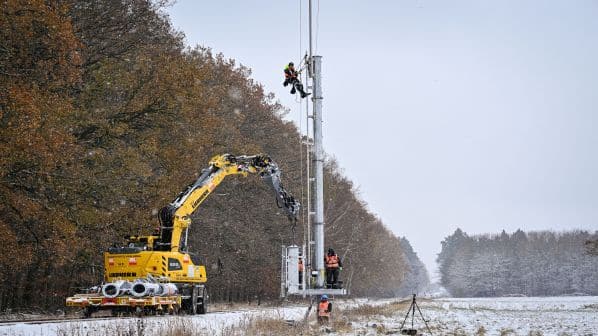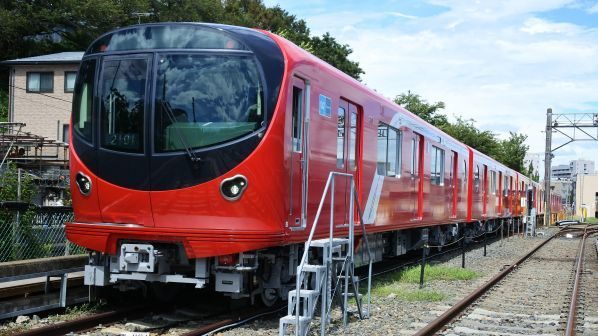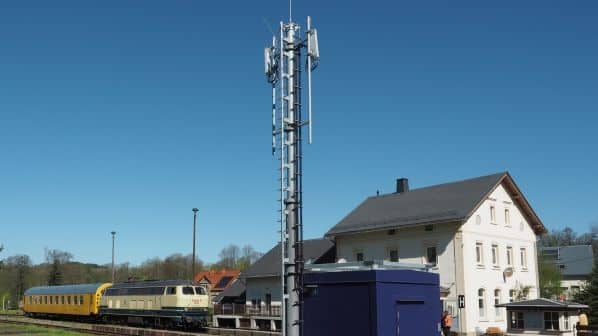GERMAN Rail (DB) has started a trial of 5G high-speed communications over a 10km stretch of the national network in Mecklenburg-Western Pomerania.
The test is part of a €6.4m research project, funded by the Federal Ministry of Digital Infrastructure and Transport (BMDV), known as “Gigabit Innovation Track” (GINT).
The project brings together DB, network equipment provider Ericsson, telecoms provider O2 Telefónica and radio mast supplier Vantage Towers.
New 15m-high trackside masts have been designed to provide gigabit connection speeds to passing trains. Different combinations of radio units and antenna are being tested using the 13 structures built along a trial section of non-electrified freight-only line between Karow (Mecklenburg) and Malchow.
DB says the masts were all installed within a month due to an innovative construction process that has eliminated concrete bases. The individual pre-fabricated elements of each mast are assembled on site using standard road-rail vehicles and fastened to the ground with steel anchors.
The trial will test high-speed communications both for passenger use and for the Future Rail Mobile Communication System (FRMCS) that is being developed in Europe to replace GSM-R as the radio communications system for ERTMS.
DB says communications specialists believe that by the beginning of the 2030s data transfer rates of up to five gigabits per second per train will be necessary to provide call quality and upload/download speeds to the same standard as fixed installations.
Mobile tests will start this spring using DB’s Advanced Trainlab, a converted class 605 TD ICE3 four-car high-speed train, and the results should be published by the end of the year.
“The GINT project shows that we can deliver high-speed onboard and trackside mobile communications in record time,” says Dr Daniela Gerd tom Markotten, DB board member for digitalisation and technology.
“This technology is not only turning the train into a rolling office or home cinema, but also creating the basis for future digitalisation of rail transport with FRMCS.”




